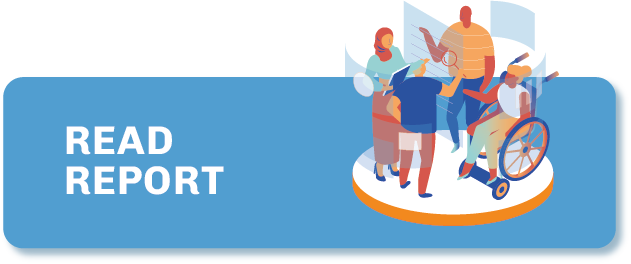Ireland
Independent digital native news outlets have proliferated in Ireland. These platforms often cover news and politics in ways that go beyond the scope of traditional news outlets, particularly in their ability to report on local news or specialised topics in more depth and detail.
The digital native media sector in Ireland has also seen a move away from traditional media’s reliance on advertising as the main source of revenue. Paid website and newsletter subscriptions are the main sources of revenue for many independent platforms.
GENERAL INFORMATION
Press
freedom
ranking
Internet
penetration
POPULATION
PRIMARY
LANGUAGE(S)
- English
- Irish
Media organisations
in the Directory
TYPE OF COVERAGE

TYPE OF ORGANISATION

GENDER OF FOUNDERS

Press freedom
Ireland ranks sixth on Reporters without Borders’ 2022 Press Freedom Index, one of just eight countries to receive a “good” rating. The country has benefited from greater media pluralism since 2019. Businessman Denis O’Brien once dominated the news industry, but he sold his shares of Independent News & Media in 2019 and finalised the sale of Communicorp in 2021. Reporters Without Borders reports that this “opened up the media landscape to greater competition and diversity”.
Journalists in Ireland are largely free to work without constraints. No journalist or media worker was killed in 2022 while carrying out their work, and there are currently none in prison, according to Reporters Without Borders. Media workers are also largely free to work without cultural constraints, particularly since a 2018 referendum removed blasphemy from the constitution.
Market structure and dominance
Irish media are “characterised by strong radio and television networks, including the main public service broadcaster RTÉ and a relatively small number of print publications still undergoing digital transition”, notes the Reuters Institute for the Study of Journalism’s Digital News Report 2022. Ireland’s trust in traditional media is relatively high by worldwide standards, according to the report, and has remained stable since 2015 at 52%. National broadcaster RTÉ and The Irish Times are most trusted (74% and 71% respectively).
Ireland’s position next to a larger English-speaking neighbour, the United Kingdom, also affects the way news is consumed both on and offline. Based on the report, Sky News and BBC News are the second and third most popular traditional news sources after RTÉ.
However, Ireland has a high internet penetration rate (92%), and use of traditional media has fallen sharply since 2015. Almost three-quarters of the population now access news weekly via a smartphone, notes the Reuters Institute.
How media is funded
Ireland’s two biggest traditional print newspapers, The Irish Times and The Irish Independent, are on “firmer financial ground in 2022”, it adds. They have been buoyed by the advertising market rebounding strongly in 2021 and 2022. However, regional titles continue to face financial difficulties, according to Reporters Without Borders. Concerns have also been raised about the financial situation of the national broadcaster, RTÉ, which is primarily funded through a yearly television licence fee.
Subscription payments to news sources have remained steady. According to a report on digital news in Ireland, 16% of people say they pay for a subscription. The percentage is higher among the younger generations, with almost one in four people under the age of 35 doing so.
Ten profiles of digital native media organisations from Ireland are included in the directory. This includes five profiles based on interviews and five profiles based on desk research.
The most popular topics are current affairs and politics. The content of these organisations is filling gaps left by traditional media – namely, they are fulfilling a need for in-depth coverage of local news that cannot be carried out by (inter)national news conglomerates.
International conglomerates have moved into the local news space, but as Tripe+Drisheen editor Ellie O’Byrne notes, these often require their reporters to produce four to five stories a day. However, Tripe+Drisheen, a reader-supported journalism platform that covers Cork city and county, has found success by slowing things down, because good local journalism “requires research and getting out into live environments”. Other independent digital outlets that cover specific areas, The Donegal Daily and The Dublin Inquirer, have also built sustainable business models following a slow journalism approach.
Covering specific areas in such detail is important to a healthy democracy. Sam Tranum, co-editor of The Dublin Inquirer, points out that Dublin City Council has a budget of over a billion euros a year, but no other media outlet covers the council to the same extent.
Independent digital native media outlets in Ireland are carving out a space in local journalism that cannot be served by traditional media or larger conglomerates. Independent outlets should not try to replicate larger media organisations. Ireland shows there is a healthy appetite for quality, slow local journalism.
Last updated: January 2023
CREDIT FOR STATISTICS: Press Freedom statistics, RSF Press Freedom Index 2022; Internet penetration and population statistics, from Internet World Stats

